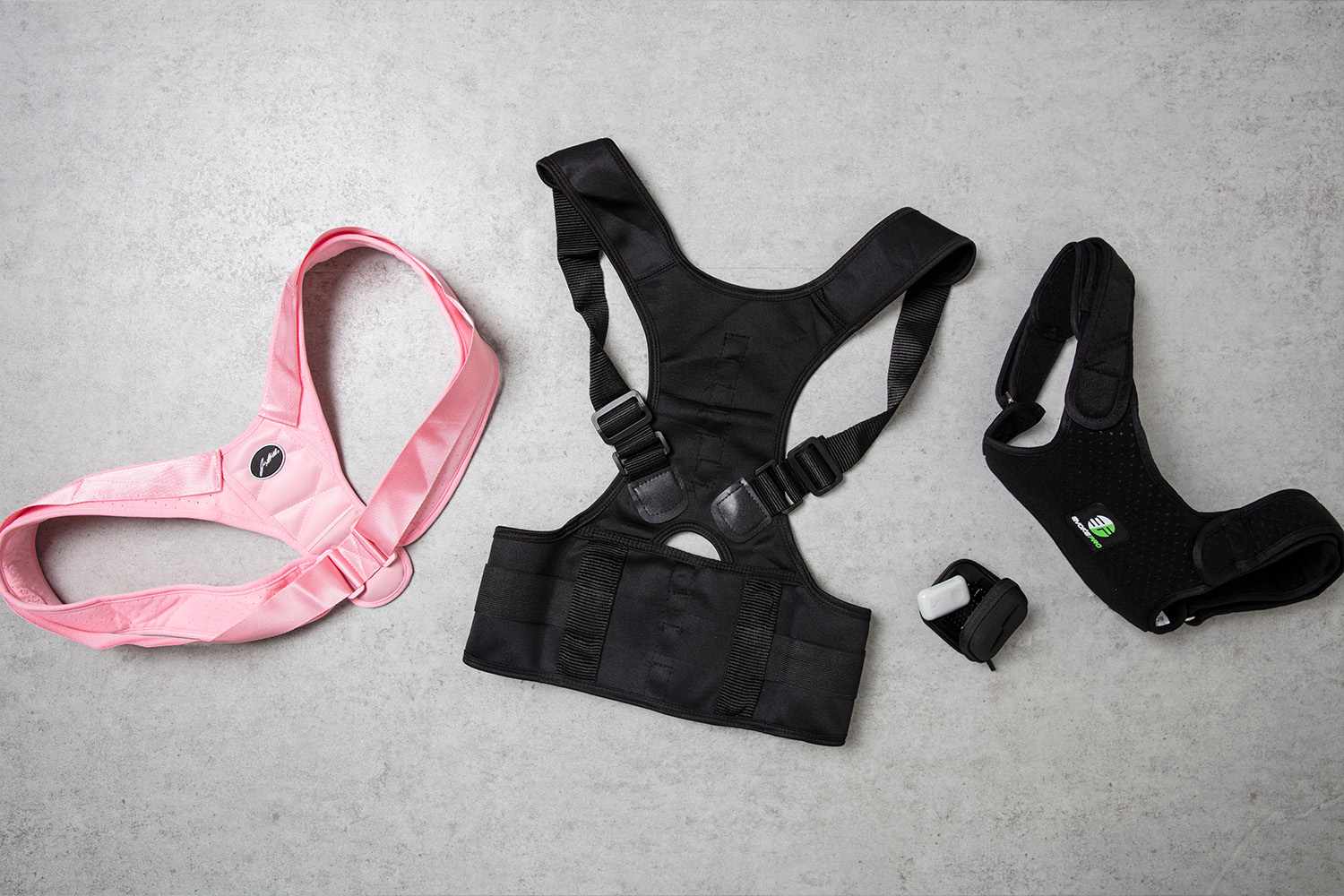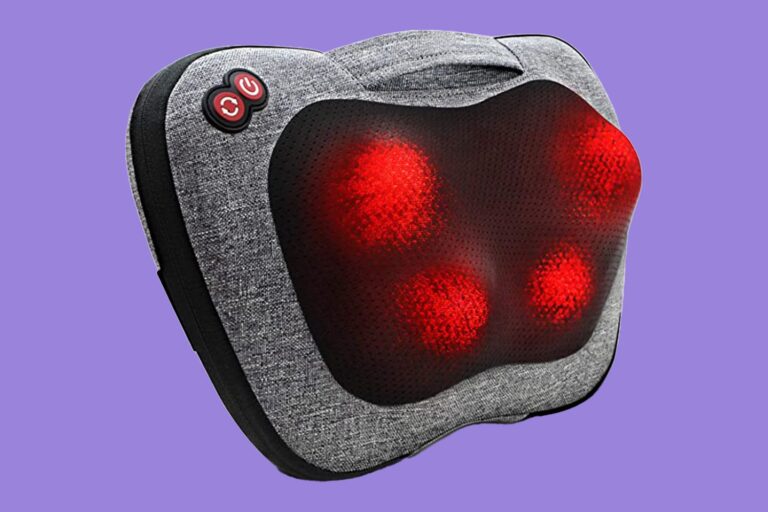The 8 Best Posture Correctors of 2023
While most of us can conjure up an image of good posture, odds are you’re not practicing it as often as you should—you might even be hunched over while you’re reading this. You also might not be aware of just how important posture is. While standing up straight is great for your self esteem and reducing back pain, it can also negatively affect things like your blood pressure, says Karena Wu, PT, DPT, FAAOMPT, physical therapist and owner of ActiveCare Physical Therapy in New York City. “Poor posture can affect your breathing, your digestion, headaches, back pain, risk of injuries, and even joint degeneration,” adds Kevin Lees, DC, Manager of Auditing and Quality at The Joint Chiropractic.
Now that you know how extensively posture can affect your body, it’s time to correct it. Posture correctors are a great first step; they work by making you more aware of your posture or even by guiding your muscles into place, like posture braces do. To find the best posture correctors, we tested 22 of the most popular options on the market in our lab, rating them for effectiveness, comfort, and overall value.
Best Overall
Hempvana Arrow Posture Corrector
:max_bytes(150000):strip_icc()/hempvana-arrow-posture-corrector-16216ff149784d629ce8041471d50381.jpg)
Amazon
The Hempvana Arrow Posture Corrector received an almost perfect score from our tester, who loved the support it provided during wear.
“While sitting at my computer with it on I was just in a mode of comfort,” our tester said. “I was just happy to sit with it on and mentally it made me feel good.” They also noted that the brace left them feeling supported in other areas in addition to the back. “My neck also felt wonderful when I took it off…It also helped my hips feel less tight and my arms had less tingle when I typed.”
This full-body comfort is a feeling that accompanies better posture, according to Dr. Lees. “Good posture allows you to breathe deeply and can even affect your energy levels and mood,” he says, meaning it’s not something you’ll feel just in your back and shoulders.
Product Details:
- Type: Back brace
- Size range: S/M and L/XL
- Material: Hemp and neoprene
Price at time of publication: $20
Best Overall Runner-up
Dr. Arthritis Posture Corrector
:max_bytes(150000):strip_icc()/dr-arthritis-posture-corrector-4ad4b1029bf0491f9c17a9e95cceca73.jpg)
Amazon
One of the top concerns when buying a posture corrector is comfortable wear that doesn’t sacrifice posture training. The Dr. Arthritis Posture Corrector uses a soft neoprene and nylon blend that feels comfortable against skin and even underarms, another issue many posture correctors face.
Our tester thought the device worked well while sitting and standing, making it an easy choice for that work-from-home slouch. The brace also includes a handbook that includes information about posture strengthening and back-strengthening exercises that complement the brace.
Our tester did note that the brace runs a little small, so you should size up for more adjustability. Keep in mind that posture correctors should fit snugly when you’re choosing your size.
Product Details:
- Type: Shoulder brace
- Size range: S, M, and L
- Material: Neoprene
Price at time of publication: $15
Best Budget
Somaz Posture Corrector
:max_bytes(150000):strip_icc()/somaz-posture-corrector-66f46a9319a140a3ba9683569387c082.jpg)
Amazon
If you want to spend a little less on a brace while still seeing results, the Somaz Posture Corrector has lots of coverage and plenty of adjustability. It includes a lower-back brace, along with full back coverage and shoulder straps, targeting every possible slouch position.
While all the straps are adjustable, their placement can make it a little difficult to personalize the brace without removing it. “Given the placement of the straps, you would need to keep taking it on and off to adjust which could become annoying the first time,” our tester said.
Product Details:
- Type: Back brace
- Size range: S, M, L, and XL
- Material: Neoprene
Price at time of publication: $13
Most Comfortable
Comfy Brace Posture Corrector
:max_bytes(150000):strip_icc()/ComfyBrace-1da77f1f4d7c45cbbe419a2cf1b8c803.jpg)
Amazon
If you’re worried about the discomfort that sometimes comes with posture correctors, ComfyBrace is a good place to start. The shoulder brace gently moves shoulders into place, working to correct posture in the upper back.
Made with a soft, breathable material, it’s also great for wearing under layers or keeping on for longer periods without being uncomfortable.
Our tester did note the tradeoff between comfort and effectiveness. “Besides pulling my shoulders back, it doesn’t feel like it’s doing much else,” our tester said, noting that it still felt like it would be easy to wear all day. While it may not be as effective as other options, it’s a great entry point into posture wear for those looking to try a posture correcting device.
Product Details:
- Type: Shoulder brace
- Size range: Fits chests 30” to 43”
- Material: Neoprene
Price at time of publication: $28
Best App-Enabled
Upright Go S Smart Posture Corrector
:max_bytes(150000):strip_icc()/UprightGoSSmartPostureCorrector-f2804f48a340411bb8cb6e57cc1dbbe8.jpg)
Amazon
Haptic feedback is something we’ve come to expect from our phones and smartwatches, but can it help to improve posture? Upright, known for its posture-correcting devices, uses buzzing to remind users of slouching. The Upright Go S attaches to the wearer’s back with a small adhesive, and—once set via the device’s app—it reminds users throughout the day that they’re no longer in their ideal posture.
While the Upright Go requires an app to use, which our tester noted could be frustrating for some, the app does offer plenty of information about the device and tips for proper use. One of our tester’s favorite aspects of the Upright Go was its adjustability, which comes courtesy of the app. Users can adjust the intensity of the device’s vibrations, which was another thing that our tester noted could be surprising at first.
“You don’t notice or truly feel the GO on the back of your neck…the shock makes you be more conscious of your posture,” our tester said, noting that the device—and its reminders—begins to feel more natural with continued wear. Dr. Wu says that you should watch out for that more “natural” feeling, however. “Sensors are good reminders [to think about your posture], but you can become sensitized and ignore the stimulus to correct your posture,” she cautions.
Product Details:
- Type: Sensor
- Size range: N/A
- Material: Plastic and medical-grade silicone
Price at time of publication: $60
Best for Sitting
FlexGuard Support Adjustable Back Brace
:max_bytes(150000):strip_icc()/flexguard-support-adjustable-back-brace-b22efd567e0f43b78600461510eede1d.jpg)
Amazon
While many posture correctors target a specific area of the back, fuller coverage can help to tackle slouching issues all over. Slouching in the back is more prevalent while we sit, especially at desks and hunched over computers. The Flexguard Posture corrector helps to target posture muscles down the back for a good reminder to sit up straight.
Overall, the corrector is comfortable and effective—our tester likened it to wearing a backpack. It’s a great option for people who spend most of their day at a desk or otherwise sitting down thanks to its full-back coverage. “It did help with my posture, and it’s comfortable and mobile,” our tester said.
Because the corrector does offer so much coverage and adjustability, it might be a little confusing for first time wearers to put on without reading the instructions.
Product Details:
- Type: Back brace
- Size range: XS—XL
- Material: Neoprene
Price at time of publication: $14
Best for Shoulder Alignment
Gaiam Restore Neoprene Posture Corrector
:max_bytes(150000):strip_icc()/gaiam-restore-neoprene-posture-corrector-9c66e8c1eb2e4032a6d952abca5056d4.jpg)
Amazon
Known for their yoga and wellness products, it makes sense that Gaiam would be committed to helping improve posture. The brand makes a few different posture correctors—two of which we tested—but this neoprene corrector was more effective thanks to its broader coverage area, which is important when looking for a posture corrector.
The design is simple, with two shoulder straps and a wide connector that runs along the top of the back. “The posture corrector is very easy to adjust and get on without any assistance,” our tester said, noting a pain point that’s often present with other posture correctors.
While our tester thought the corrector is great for aligning shoulders and upper back posture, they also noted that people who have issues with lower back slouching might want to look at another option.
Product Details:
- Type: Shoulder brace
- Size range: One size
- Material: Neoprene
Price at time of publication: $20
Easiest to Use
Berlin & Daughter Posture Corrector
:max_bytes(150000):strip_icc()/berlin--daughter-posture-corrector-2c25d06c6f1840bdb12225aebdaaaee1.jpg)
Amazon
If you’re looking for a posture corrector that doesn’t require constant adjustment, Berlin and Daughter’s device is a fuss-free option for keeping slouching in check. Its design features three sets of criss-crossing straps along the back and a waist band in the front. Our tester loved the dual-design of the product. “The waistband keeps my spine aligned, [and] the shoulder straps keep my shoulders from rolling forward while I type,” they said. “I actually find myself sitting up straighter.”
While the corrector is a great option for people who like to keep things simple, our tester noted that it might be a little too simple. None of its straps are adjustable, with just one front velcro closure at its waistband. While our tester still thought the corrector was incredibly comfortable, it might be worth noting that it has no adjustability if you need it.
Product Details:
- Type: Shoulder brace
- Size range: XS – L
- Material: Neoprene
Price at time of publication: $30
Our Testing Process
To find the best posture correctors, we tested 22 of the most popular items on the market in our lab. First, testers took a before photo of their everyday posture in the lab and then wore their posture corrector for an hour, making a note of how they felt.
We also spoke to experts to discuss what to look for when selecting posture correcting devices. These experts included:
- Karena Wu, PT, DPT, FAAOMPT, physical therapist and owner of ActiveCare Physical Therapy in New York City
- Kevin Lees, DC, Manager of Auditing and Quality at The Joint Chiropractic
- Charlotte Hurst, DC, BSc(hons), PG Dip, MMCA, chiropractor and owner of Hurst Health
- Christina Rodriguez, PT, DPT, OCS, cert. MDT, at the Hospital for Special Surgery in New York City
We tested each device for effectiveness, comfort, adjustability, and overall value. After wearing the devices, the Health team returned to the lab to see how their new and improved posture measured against their previous results. We also received expert insight from Christina Rodriguez, PT, DPT, OCS, cert. MDT, at the Hospital for Special Surgery in New York City, who helped to supervise the test.
More Posture Correctors to Consider
- Upright Go 2 Smart Posture Corrector: While the device is easy to wear and does everything it promises, our tester noted that the price point was much higher than other devices that deliver similar results.
- Canipha Posture Brace For Teens and Women: Our tester liked that the device focused on correcting posture in the shoulders specifically, but its one-size-fits-all design may not work well for most people.
- Gaiam Restore Posture Corrector: While the device is comfortable and corrects posture without being restrictive, our tester thought the high back could be a little uncomfortable.
Health / Jhett Thompson
What to Know About Posture Correctors
When shopping for posture correctors, you should take a few considerations, including the type of support you want and level of adjustability.
Types of Posture Correctors
Posture correctors are available in a few different styles, each targeting different areas of the back.
Shoulder and Back Braces
Shoulder braces are the most common type of posture corrector. They cover the upper back, using straps to gently pull shoulders into alignment. A back brace offers more support, with a covering that extends past the shoulder blades and further down the back.
Dr. Wu suggests that, overall, braces tend to be the best type of posture correcting device. “External structural assistive devices [like] shoulder straps and back braces are more effective as they specifically put you into the correct posture,” she says.
Health / Jhett Thompson
Sensor
Sensors, like the Upright Go, work by taking an initial reading of your posture and monitoring for deviations during wear. Sensors work by reminding the wearer to adjust their posture rather than holding the muscles in place.
As noted by Dr. Wu, physical external devices, like back and shoulder braces, tend to be more highly recommended because they guide your posture muscles into place, but there are promising results for posture sensors. A study of posture-correcting sensors, like the Upright Go, found that people using these devices had lower neck flexion—when your chin drops into your chest—meaning that these devices do help to make you more aware of your posture.
Posture-Correcting Garments
If you wear a bra, the good news is that you might be able to combine support and posture correction into one garment. A study of posture-correcting bras found that scapula retraction—that is, the pulled-in shoulders that account for at least part of most people’s slouching—was improved through wearing a posture correcting bra.
Posture correction is now also becoming more popular in clothing, with some shirts available with built-in posture correctors. You can probably expect to have less dedicated support from these two-in-one style pieces, however.
Adjustability and Size
Posture correctors should be comfortable enough for extended wear, but they should fit against the areas where your posture is worst.
“Posture correctors should be a snug fit, applying pressure to the areas that are most likely leading to poor posture, like the anterior portion of the shoulders,” says Dr. Lees.
Posture correctors should also offer plenty of adjustability so that you can ensure a good fit.
How Much to Expect to Pay for a Posture Corrector
Manual posture correctors—that is, braces that help to manually adjust posture—are fairly inexpensive. You can expect to pay less than $30 for a posture-correcting brace, with many available for under $20. Posture sensors tend to be more expensive, often costing $60 or more.
Health / Jhett Thompson
Your Questions, Answered
Do posture correctors work?
While some of the experts we spoke with were a little wary of suggesting devices to fix posture, they agreed that the devices could be great—especially if you don’t pay much attention to your posture throughout the day.
Charlotte Hurst, DC, BSc(hons), PG Dip, MMCA, chiropractor and owner of Hurst Health, says that posture muscles can get tired throughout the day and posture braces can activate these muscles and strengthen them.
Doctors also note that a posture corrector won’t fix posture by itself. While the devices often work as advertised—by guiding muscles into place or reminding you to adjust your form—you need to provide additional effort to fix your posture.
How long should you use a posture corrector?
While you can technically wear a posture corrector for as long as is comfortable, doctors recommend only wearing them for short periods and complementing that wear time with posture correcting exercises. About an hour a day, says Dr. Wu, is enough time to remind your muscles of proper posture.
Dr. Lees suggests wearing a posture corrector when you’re not focusing as much on posture, like when sitting at a desk or exercising.
How long does it take for posture correctors to work?
You should start to feel the effects of a posture corrector right away as it guides your muscles into place–or, as in the case of a posture sensor, makes you more cognizant of your posture. As for how long it takes them to work, it depends on how much effort you dedicate to improving your posture, not just through wearing the device but also through stretches and back-strengthening exercises.
Dr. Hurst also recommends a wear plan that comes from Percko, a specific posture corrector that she recommends. The plan includes wearing the brace five days a week for three weeks, then gradually reducing wear over the following six weeks so that you can support your posture muscles on your own.
Do chiropractors recommend posture correctors?
While some of the experts we spoke with were a little wary of suggesting devices to fix posture, they agreed that the devices could be great—especially if you don’t pay much attention to your posture throughout the day. Dr. Lees says that they can serve as great tools for people looking to improve their body’s biomechanics. “It is a simple addition that can serve as a reminder when their mind focuses on other tasks throughout the week,” he says, noting that correctors don’t fix posture on their own. “There are other factors that should be addressed when improving your posture including your workplace ergonomics, and stretching and strengthening postural muscles.”
Dr. Wu says that posture correcting devices aren’t her favorite method for improving posture, but they can help people to be more mindful of how they sit and stand throughout the day. She says that if people “demonstrate a lack of awareness of their proprioception [body position in space], then I recommend the use of them,” noting that she doesn’t recommend them for people who want to rely solely on the device instead of working with the device to improve their posture.
Do chiropractors recommend posture correctors?
While some of the experts we spoke with were a little wary of suggesting devices to fix posture, they agreed that the devices could be great—especially if you don’t pay much attention to your posture throughout the day. Dr. Lees says that they can serve as great tools for people looking to improve their body’s biomechanics. “It is a simple addition that can serve as a reminder when their mind focuses on other tasks throughout the week,” he says, noting that correctors don’t fix posture on their own. “There are other factors that should be addressed when improving your posture including your workplace ergonomics, and stretching and strengthening postural muscles.”
Dr. Wu says that posture correcting devices aren’t her favorite method for improving posture, but they can help people to be more mindful of how they sit and stand throughout the day. She says that if people “demonstrate a lack of awareness of their proprioception [body position in space], then I recommend the use of them,” noting that she doesn’t recommend them for people who want to rely solely on the device instead of working with the device to improve their posture.
Who We Are
Jaylyn Pruitt has a Master of Library and Information Science with a focus on health information. Her goal is to provide easy-to-understand information with a patient perspective in mind.






